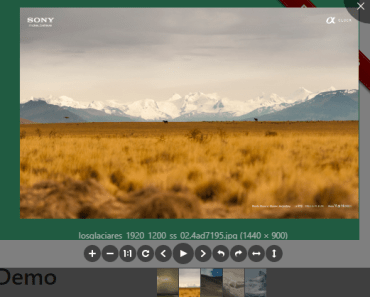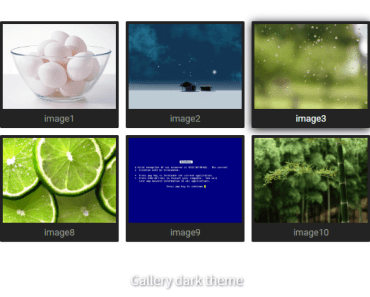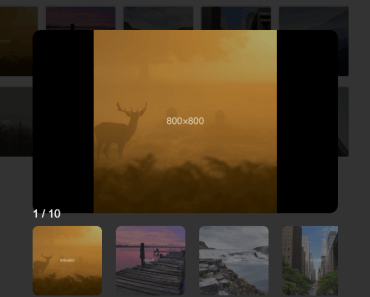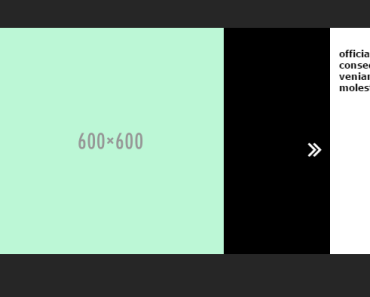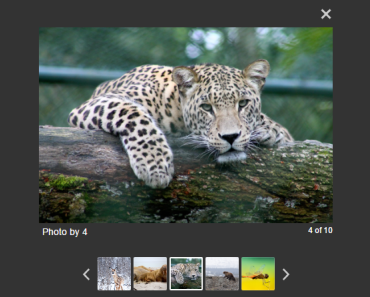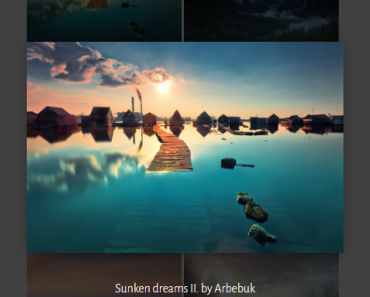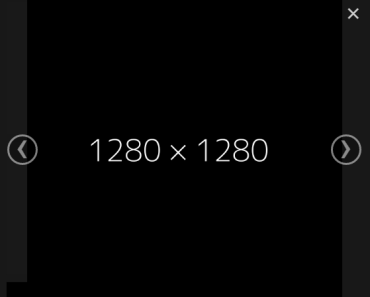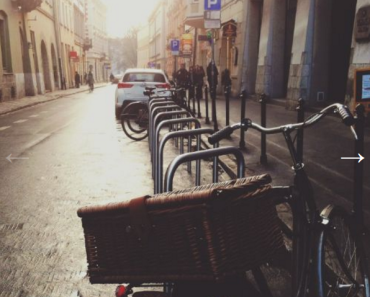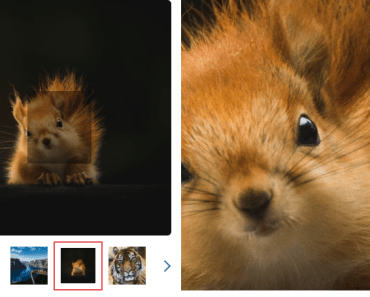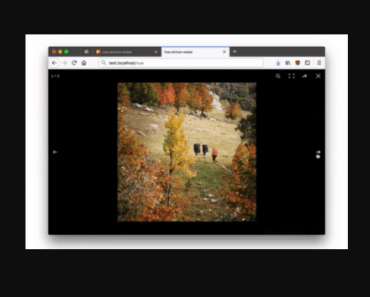v-viewer
Image viewer component for vue, supports rotation, scale, zoom and so on, based on viewer.js
Live demo
Quick Example
中文文档
Migration from 0.x
- The only change you have to make is to manually import the
.cssfile:
import 'viewerjs/dist/viewer.css' Installation
Install from GitHub via NPM
npm install v-viewerUsage
To use v-viewer, simply import it and the css file, and call Vue.use() to install.
<template> <div id="app"> <!-- directive --> <div class="images" v-viewer> <img src="1.jpg"> <img src="2.jpg"> ... </div> <!-- component --> <viewer :images="images"> <img v-for="src in images" :src="src" :key="src"> </viewer> </div> </template> <script> import 'viewerjs/dist/viewer.css' import Viewer from 'v-viewer' import Vue from 'vue' Vue.use(Viewer) export default { data() { images: ['1.jpg', '2.jpg'] } } </script>Support UMD
Browser
<link href="//path/viewer.css" rel="stylesheet"> <script src="//path/vue.js"></script> <script src="//path/viewer.js"></script> <script src="//path/v-viewer.js"></script> ... <script> Vue.use(VueViewer.default) </script>CommonJS
var VueViewer = require('VueViewer')AMD
require(['VueViewer'], function (VueViewer) {});Usage of directive
Just add the directive v-viewer to any element, then all img elements in it will be handled by viewer.
You can set the options like this: v-viewer="{inline: true}"
Get the element by selector and then use el.$viewer to get the viewer instance if you need.
<template> <div id="app"> <div class="images" v-viewer="{movable: false}"> <img v-for="src in images" :src="src" :key="src"> </div> <button type="button" @click="show">Show</button> </div> </template> <script> import 'viewerjs/dist/viewer.css' import Viewer from 'v-viewer' import Vue from 'vue' Vue.use(Viewer) export default { data() { images: ['1.jpg', '2.jpg'] }, methods: { show () { const viewer = this.$el.querySelector('.images').$viewer viewer.show() } } } </script>Direcitve modifiers
static
The viewer renderer will be executed only once after the directive binded.
If you're sure the images inside this element won't change again, use it to avoid unnecessary re-render.
<div class="images" v-viewer.static="{inline: true}"> <img v-for="src in images" :src="src" :key="src"> </div> Usage of component
You can simply import the component and register it locally too.
Use scoped slot to customize the presentation of your images.
Listen for the inited event to get the viewer instance, or use this.refs.xxx.$viewer.
<template> <div id="app"> <viewer :options="options" :images="images" @inited="inited" class="viewer" ref="viewer" > <template slot-scope="scope"> <img v-for="src in scope.images" :src="src" :key="src"> {{scope.options}} </template> </viewer> <button type="button" @click="show">Show</button> </div> </template> <script> import 'viewerjs/dist/viewer.css' import Viewer from "v-viewer/src/component.vue" export default { components: { Viewer }, data() { images: ['1.jpg', '2.jpg'] }, methods: { inited (viewer) { this.$viewer = viewer }, show () { this.$viewer.show() } } } </script>You can replace images with trigger, to accept any type of prop. when the trigger changes, the component will re-render the viewer.
<viewer :trigger="externallyGeneratedHtmlWithImages"> <div v-html="externallyGeneratedHtmlWithImages"/> </viewer>Options & Methods
Refer to viewer.js.
Plugin options
name
- Type:
String - Default:
viewer
If you need to avoid name conflict, you can import it like this:
<template> <div id="app"> <div class="images" v-vuer="{movable: false}"> <img v-for="src in images" :src="src" :key="src"> </div> <button type="button" @click="show">Show</button> </div> </template> <script> import 'viewerjs/dist/viewer.css' import Vuer from 'v-viewer' import Vue from 'vue' Vue.use(Vuer, {name: 'vuer'}) export default { data() { images: ['1.jpg', '2.jpg'] }, methods: { show () { const vuer = this.$el.querySelector('.images').$vuer vuer.show() } } } </script>defaultOptions
- Type:
Object - Default:
undefined
If you need to set the viewer default options, you can import it like this:
import Viewer from 'v-viewer' import Vue from 'vue' Vue.use(Viewer, { defaultOptions: { zIndex: 9999 } })And you can reset the default options at any other time:
import Viewer from 'v-viewer' import Vue from 'vue' Vue.use(Viewer) Viewer.setDefaults({ zIndexInline: 2017 })